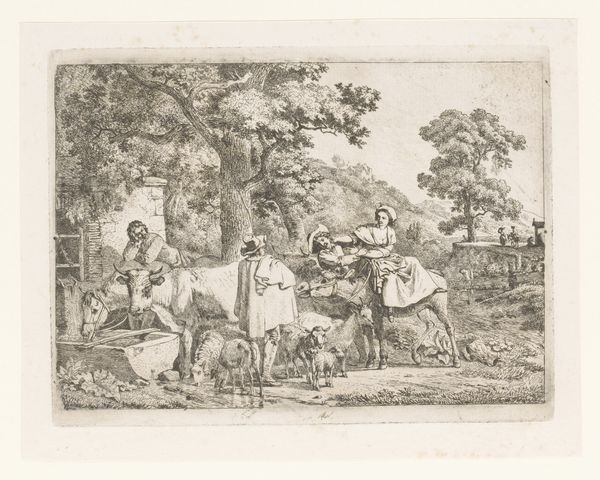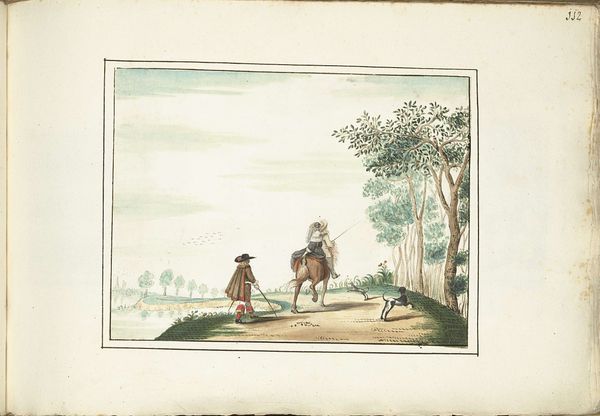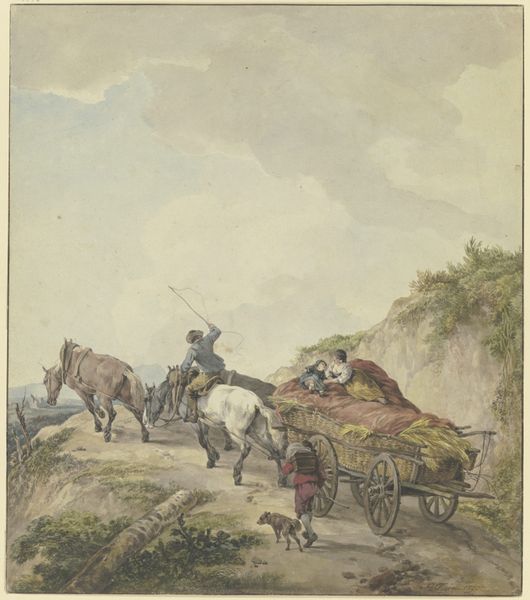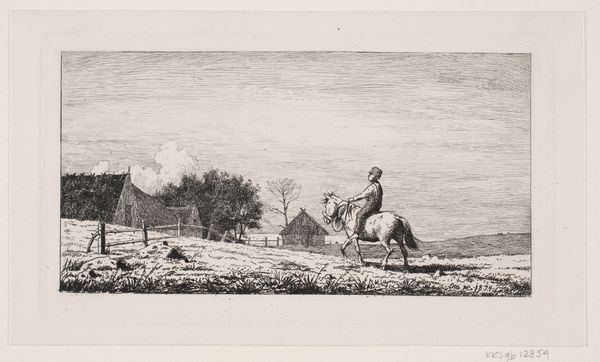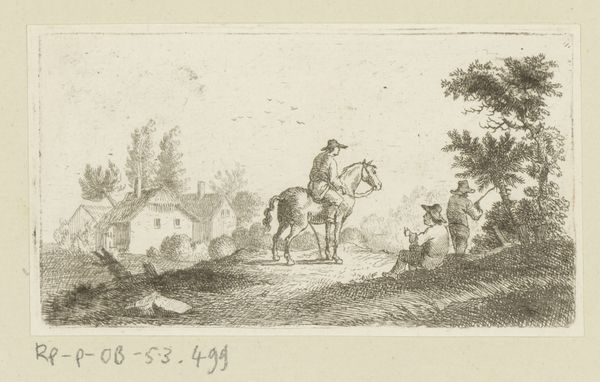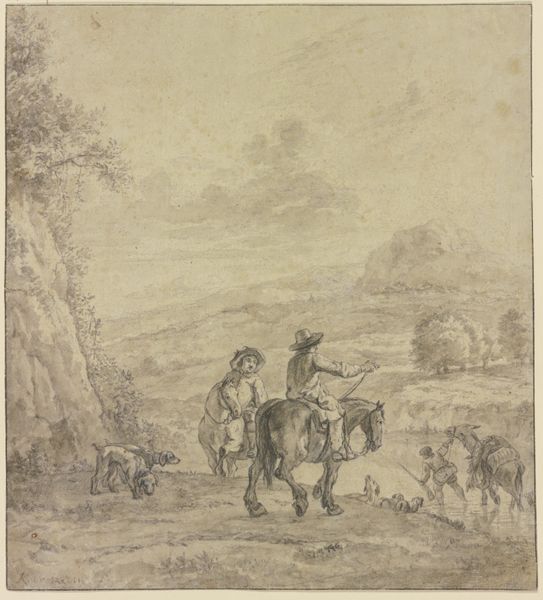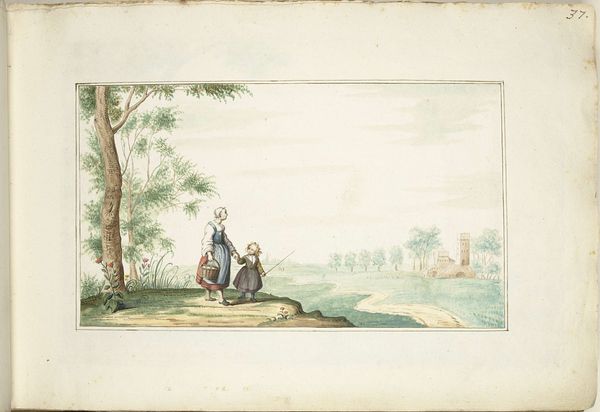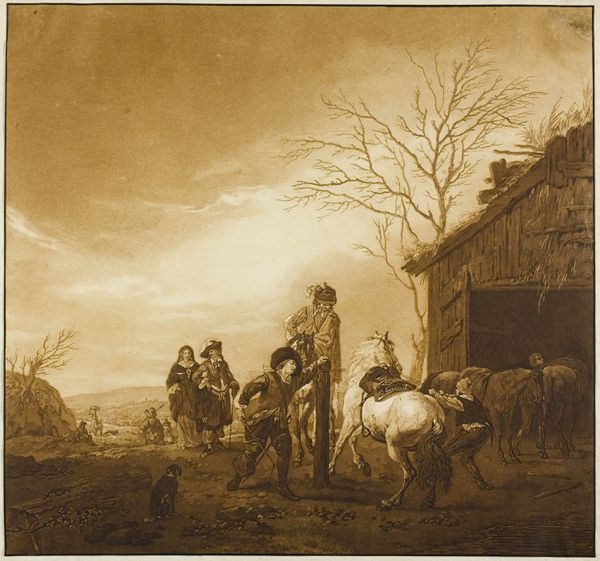
Dimensions: height 162 mm, width 249 mm
Copyright: Rijks Museum: Open Domain
Curator: This lovely watercolor is titled "Three Young Children in a Landscape" and it's by Elchanon Verveer. The Rijksmuseum dates it somewhere between 1836 and 1900. What strikes you immediately about it? Editor: Melancholy, almost sepia-toned. And the technique... that layered wash effect speaks of control, yet there's a beautiful fragility to the overall impression. You can almost smell the damp earth. It certainly leans heavily into the Romantic spirit. Curator: Yes, that atmospheric perspective is classic Romanticism. The hazy distance and emphasis on feeling over precise detail. And it’s watercolor, which gives it a transient, ethereal quality. But beyond that aesthetic, I keep thinking about labor. Editor: You're focusing on the work *behind* the image? Curator: Absolutely. Watercolors of this period often mask the immense skill needed to achieve the subtle gradients and luminosity we see here. There's a lot of labor implied. Beyond that, consider the children themselves. Their clothing and bare feet tell a story of working class life. They're participating in rural economies, however young. And the inclusion of the goat? Another symbol of a working, productive landscape. Editor: That goat is pretty darn cute though. I like that the composition places these three figures, plus the goat, right on the edge of this landscape with all those looming clouds, almost like a stage. A simple narrative, made captivating with light. And the way the girl is posed seems carefully designed to draw our eyes to her companions and the animal she's attending to. Curator: But designed for what purpose? We're looking at, potentially, a work commissioned to project a specific idea about rural life. A vision shaped by those consuming the image, not necessarily reflecting the realities experienced by these children and their families. Was it a detached commentary by a societal member removed from their reality, romanticizing labor through aesthetic skill? I wonder if the intended viewing public truly understood the lives represented or simply reveled in this picturesque scene. Editor: A fascinating point to consider when looking at Verveer's approach to portraying landscapes. You’ve certainly changed the way I see this seemingly simple watercolor. Curator: And I find that looking at how a work of art has been fabricated offers a completely different perspective on this seemingly straightforward piece. It also changes how I see labor practices from back then to now.
Comments
No comments
Be the first to comment and join the conversation on the ultimate creative platform.
